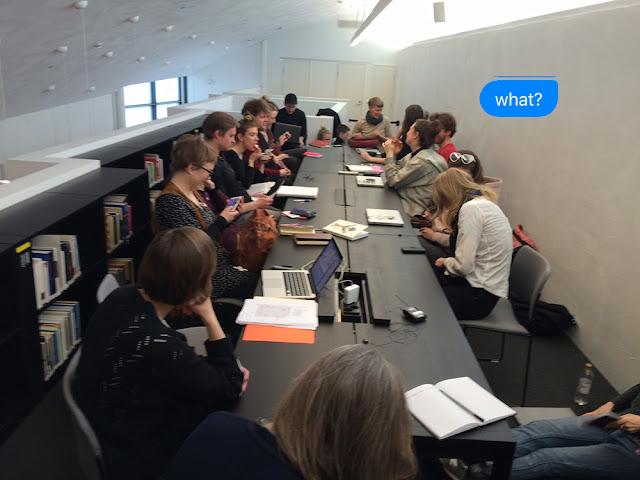Cary Wolfe: What is Posthumanism? -Introduction
LECTURE by Karoliina Lummma 01.03.
Karoliina Lummaa: Introduction
Karoliina Lummaa: Corpo-Realities
Lummaa texts in RG: 08.03.
LECTURE by Jussi Parikka 02.03
Jussi Parikka: Insect Media - Introduction
Jussi Parikka: TECHNICS OF NATURE AND TEMPORALITY Uexküll’s Ethology
(also see Agamben Chapter "Umwelt")
Parikka and Uexküll texts in RG: 09.03.
LECTURE by Tuula Närhinen 15.03.
Patricia Vieira Phytographia: Literature as Plant Writing
Michael Marder: Plant Thinking
Marder in RG: 16. 03.
LECTURE by Antti Salminen 22.03.
Antti Salminen: Parasites -- Fragments of the Non-Human.
plus:
Salminen & Vaden: An Essay in Nafthology (book link, optional for those who chose Salminen)
Salminen in RG: 23.03
LECTURE 29.03. Caspar Stracke

John Berger: Why Look at Animals?
Berger in RG: 30.03.
Lecture, RE-SCHEDULED: 04.04. Tuija Kokkonen
Giorgio Agamben: The Open - Human and Animal, Frankfurt 2003
Only the chapters: Taxonomy -Without Rank - Anthropological Machine - Umwelt - Tick (p.23 - p.47)
Agamben in RG: 05.04.
Bruno Latour: A Plea for Earthly Sciences.
Latour in RG: 05.04.
Jacques Derrida: The Animal That Therefore I am (More to Follow) 2002
Jean-Luc Nancy: "Eating Well" - or the Calculation of the Subject. An interview with Jacques Derrida
Derrida in RG: 23.03
Donna Haraway: A Cyborg Manifesto (1984)
Donna Hawaway:
Teddy Bear Patriarchy: Taxidermy in the Garden of Eden
Donna Hawaway:
.

Matthew Fuller: Art for Animals






























